From 16mm to 16-bit:
An Interview with Evan Meaney
By Clint Enns
Religion, Booze, or Hollis Frampton! |
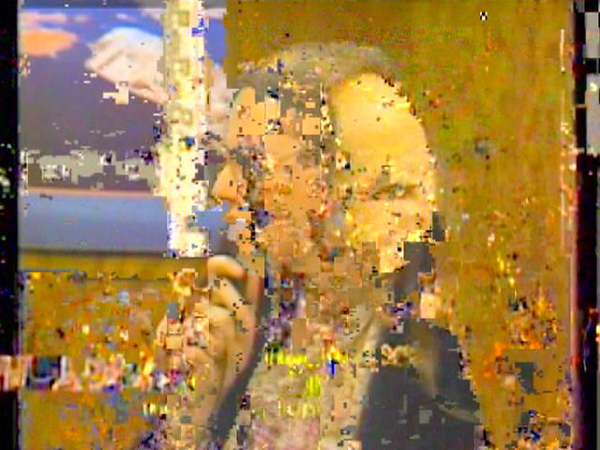 Ceibas: We Things at Play / Evan Meaney
Ceibas: We Things at Play / Evan Meaney
Evan Meaney is a video artist and researcher who teaches time-based media design at the University of Tennessee. His work deals primarily with glitches and their connection to communication theory, the archive, ghosts, and our digital identities. Meaney is also one of the founding members of GLI.TC/H, a string of events that began in 2010 in Chicago and expanded to Amsterdam (NL), and Birmingham (UK) in 2011, in addition to producing a publication titled GLI.TC/H READER(ROR).
In this interview Meaney and I discussed The Ceibas Cycle, a series of videos and installations whose production took place from 2007 to 2011. The ten-part cycle begins with a prologue titled How Mayan Lovers Might Find the Next Life (2007) and ends with an epilogue titled The Well of Representation (2011). That video won him best emerging artist at the 50th Ann Arbor Film Festival and was, in my opinion, best of the fest at the 2012 Images Festival and arguably Meaney’s best work to date.
Meaney and I recently met in person at the Images Festival, though our on-line friendship began in 2010, after the first GLI.TC/H Festival. This interview was developed over the course of a few months through conversations in person, by e-mail and late night Facebook chats.
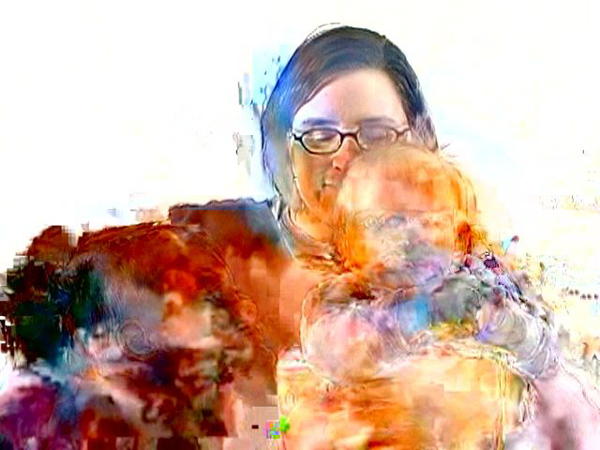
Ceibas: To Hold a Future Body So Close To One's Own Portrait / Evan Meaney
Clint Enns: In order to work through some of the ideas presented in the Ceibas Cycle, let’s discuss them individually, in relation to the other works in the cycle, and naturally end on the epilogue, The Well of Representation, a video that seems to combine all of these ideas into one glitch-tastic machinima masterpiece. The connection between glitch and communication is a theme that is explored in How Mayan Lovers Might Find The Next Life, Shannon's Entropy (2008), We Things At Play (2010), and The Unseeable Exchange of Our Parts (2008). In We Things At Play you use subtitles and repetition to demonstrate how people have grown tolerant of linguistic noise in our day-to-day conversations – the uh(s), like(s), so(s), ummm(s). Originally, these linguistic errors are removed from the subtitles, however, they are re-introduced once the video glitches out. Although people accept linguistic noise, we are still very intolerant of visual noise, and usually see it as disrupting our visual communication. Why are we bothered by visual noise, but often do not even notice linguistic noise? Do you feel this is something we will grow more tolerant of as time goes on and with increased exposure to visual digital communication? For instance, as younger generations grow up with YouTube and NetFlix, will streaming noise become less noticeable, like linguistic noise?
Evan Meaney: For sure, we are already growing more tolerant of it. However, this might not be the best way to describe it. More accurately, it seems to be becoming part of us. I think these interruptions humanize the technology that we use and even reflect a larger, cyber-organized hybridization of language and representation. Err(s) and umm(s) have been around long enough to become linguistically significant, maybe someday Netflix stutters might come to hold similar significances.
 Ceibas: Sigma Fugue / Evan Meaney
Ceibas: Sigma Fugue / Evan Meaney
CE: Just as the glitch seems to humanize technology, in your work you also humanize the glitch. In Shannon’s Entropy you connect the glitch to Alzheimer’s disease, specifically in relation to the information theorist Claude Shannon, [2] who suffered from the disease at the end of his life. If we view our memory as a database, Alzheimer’s can be seen as a glitch that disrupts our usual process of accessing the ‘archive.’
EM: I think that’s a safe analogy. If we think of our relationship to technology as a true back-and-forth relationship, we might be able to see mnemonic diseases and digital glitches as the same process, just on two different sides of the cyborgian coin.
CE: You also connect the glitch to the afterlife in this work. In the video, Shannon's wife Mary Elizabeth writes to their son, telling him that she still wakes up some nights hearing her husband's voice. Can you explain the connection between life, glitches, and the goal of The Ceibas Cycle?
EM: If I could do that in words I wouldn’t have spent all this time making the work. This sort of thing is complicated; these are big questions that you can only see the answer to out of the corner of your eye. That’s part of my hope for this work, to make gestures towards that explanation as a process, not as an endpoint… Implicitly, I was hoping to gesture towards the changing legacy of our information. Information is derived from data – it exists and then it is suddenly gone... but hopefully not forgotten.
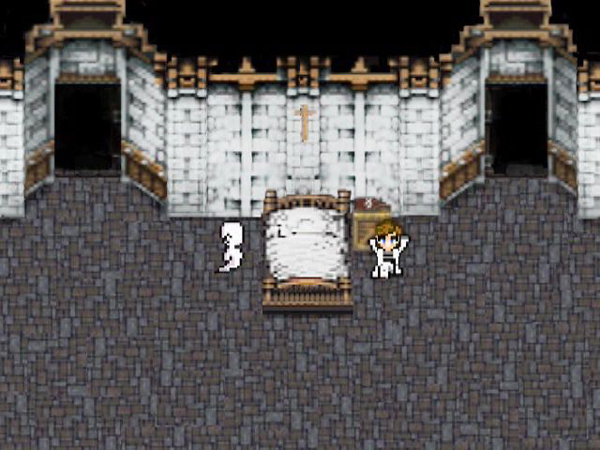 Ceibas: Epilogue-The Well of Representation / Evan Meaney
Ceibas: Epilogue-The Well of Representation / Evan Meaney
CE: I like that – the ghost of information remains, haunting us. More explicitly, does the glitch provide you with hope that there is life after death?
EM: It provides me with the comfort that there is a huge, near-endless canon of things that I cannot (nor will ever be able to) explain as long as I remain alive.
CE: So some glitches are unexplainable, that is, not simply something that is unavailable and unexpected?
EM: We can certainly explain them to ourselves. Simple glitches (like code arguments) are easy enough to track down. But a real glitch, a real breakage from the known, something on a large scale – I would hope that would be unexplainable.
CE: To Hold a Future Body So Close to One’s Own (2008) provides a visual representation of our own inevitable break down and demonstrates the lack of control over our digital representation. These digital manipulations and mutations are quite beautiful.
EM: One might say that we were never really in control, and the recognition of that fact is the actual beauty.
CE: This idea is also explored in Beneath the Pressure of the Sky (2008). In this work you explore the government’s absurd attempts to deal with what may be considered the biggest cultural glitch of our time: 9/11.
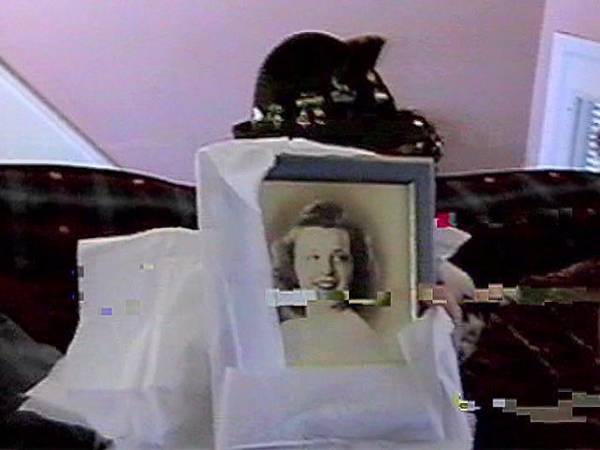
Ceibas: Sigma Fugue / Evan Meaney
EM: The real error is the hope to catalogue all travellers. It is impossible to know everything, or rather it is impossible to know things perfectly in the imperfect language of imperfect systems. It’s like wishing for a unicorn. Something beautiful, yes – but super improbable.
CE: This idea can also be applied to the archive; it is impossible to save everything perfectly. In Sigma Fugue (2009) you explore this idea by purposely corrupting your own home movies. This video seems to visually embody the ‘Digital Dark Age’ that Paolo Cherchi Usai implicitly implies in his extremely engaging, poetic and provocative book, The Death of Cinema: History, Cultural Memory and the Digital Dark Age.
EM: A kind compliment.
CE: On the other hand, in the video, your grandparents receive high-school photographs of themselves, a medium that at this point many archivists see as outlasting the digital. Furthermore, one can safely presume that you didn't actually corrupt the original home movie files?
EM: Some of them were, believe it or not, beginning to fail on their own. The rest, I gave some nudges to. However, just like the pictures of my grandparents, these files were collapsing of their own entropic accord.
CE: Of course this kind of entropy is inevitable, but the issue is far more complicated. Once someone takes an interest in these historical items it is possible to preserve them, albeit through a costly process. For instance, your grandparents’ high-school photographs were presumably restored, and new prints were made . It seems relevant that you saved copies of the original files (decomposing as they were) and worked with copies.
EM: I would say that this was for the ease of the project’s workflow – so that if something went ‘wrong,’ I could ‘fix’ it. Given the context, this sounds a little silly.
CE: I don't think it’ s silly in the slightest, in fact I think this is something far more interesting than you are making it out to be. The tension between the ephemeral and the impossible eternal. Part of your practice is taking photographs and documenting; it doesn't seem unreasonable that, at the very least, you would interested in attempting to archive your own work.
EM: I wonder if there is a German compound word for archiving with the full expectation of disappearance. I wonder if carpenters build keels with the preternatural knowledge that one day their handiwork will become a ghost-ship. Who doesn’t want to make a ghost ship? Who doesn’t want to archive something as if they’ll never see it again?
CE: In your ergodic [3] installation A Similar History (2009), you explore the archive in an interesting way: y ou’ve described the work as a hacked archive. The source material is from a mysteriously abandoned medical research facility whose archives, originally thought to be destroyed, surfaced on two Latin American blogs. Can you further describe A Similar History?
EM: That project attempts to speak to the interconnections between disparate narratological elements, and how the idea of narrative is a check-sum to guard against entropy on the receiver side. Receivers, audiences, humans, all invent narratives to explain experiences to themselves. A Similar History offers many, many narratives in a seemingly infinite number of permutations to disrupt that check-sum. Users shuffle from the records of a Honduran medical research facility, to long strands of jpeg data, to a biography of the early life of poor, poor Alan Turing. A Similar History is about how, in a multi-linear space, the walls between previous, present, and future experience crack through the notions of exterior users. While there are beginnings and ends to all of the narrative threads, they aren’t made explicit to the user. It is as if the narrative of this text-installation isn’t a narrative, it is something smaller, the text itself.
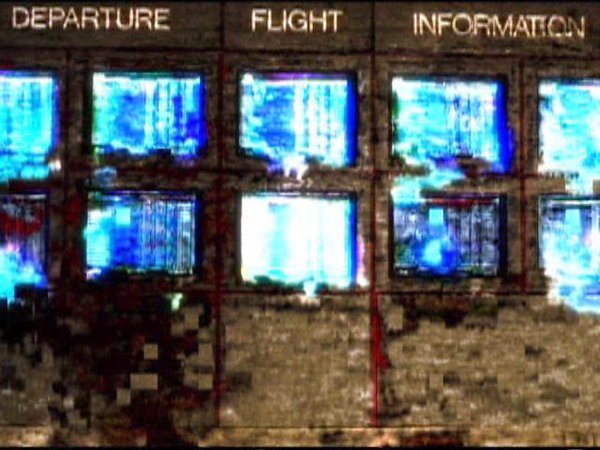
Ceibas: Beneath the Pressure of the Sky / Evan Meaney
EM: I think that machines help us live out our current lives in the aim of a better future. According to some (i.e. Bergson) the function of the present is to encode a past for the future to use for reference. So, maybe in this way, systems act in cooperation with the present to synthesize a unified future.
CE: In The Well of Representation, the epilogue of the Ceibas Cycle, three filmmakers occupy ‘saved slots.’ At the top is HF, who has completed the game, DG, who is about half way to completing it and EM, who has just began the journey. HF and EM are obvious; Hollis Frampton and yourself, however, who is this enigmatic DG? Is it D.W. Griffith? Why didn't he have the saved slot before Frampton?
EM: Think closer to home. DG is David Gatten.
CE: I am still fairly unfamiliar with David Gatten's work, although I recently saw The Matter Propounded, of its Possibility or Impossibility, Treated in Four Parts (2011) at the Onion City Experimental Film and Video Festival in Chicago. I blame my limited film viewing opportunities on living in Winnipeg. Can you explain the connection between Gatten's work and Representation?
EM: Like many of his students, David introduced me to Frampton’s work. And for that I am in his debt. Beyond that, the inquisitive binary spirit of scientific calculation and sentimental education is alive in both David’s work and Frampton’s. When I become a better filmmaker, I would love to continue that tradition.
CE: Frampton had the top score, but it also says that HF has completed the game. This is somewhat ironic considering that his ultimate cinematic masterpiece remains unfinished (in essence, by the very nature of the project). Your film references Gloria! (1979). Does Gloria! trump the unfinished Magellan in relevancy?
EM: I used to somewhat hyperbolically argue that Gloria! was not only the greatest film ever made but the only relevant piece of communication ever delivered. It’s only nine minutes in length, but by the end you’re less afraid of dying since it provides you with an amazing hope of continuation. Pretty amazing. For me, Frampton’s completion and my own incompletion have to do with who is still alive.
CE: In other words, everyone completes the cycle when they die, not just filmmakers.
EM: I don’t think I should speak for anyone else’s mortality, but I personally find this elegy comforting and offer it to others for their consideration.
CE: Frampton’s Gloria! is a mediation on death, on language’s (including text, music and moving image) ability to communicate about the past, and on communication beyond language. Your video deals with all of these topics while introducing noise into the equation.
EM: What we call noise is, in fact, an entropic, even ghostly, communication.
CE: There is no Player 2, and in the end there will be no Player 1. Is our own morality something we face alone?
EM: It’s something, I feel, we construct alone, but that doesn’t mean we can’t share it. Maybe for some the act of sharing is the act of construction, though I might argue that a life not shared at some point falls prey to tree-falling-in-the-forest syndrome. As The Ceibas Cycle suggests – if you don’t get to share it on this side, you can share it under the informatic constructs of the Ceibas trees when the time is finally right.
CE: Amen! Thanks Evan!
EM: Thanks for this Clint.
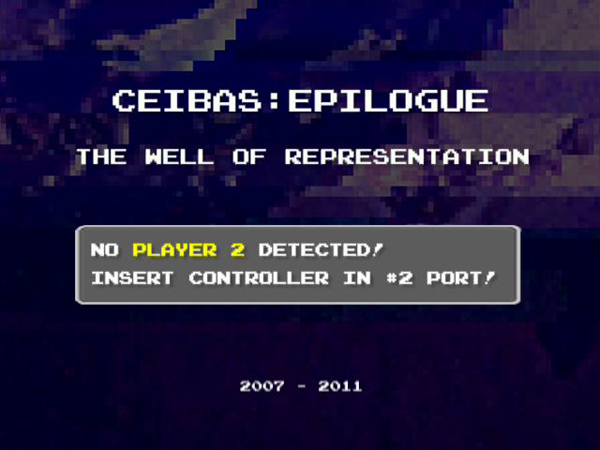
Ceibas: Epilogue-The Well of Representation / Evan Meaney
NOTES
1. A remark made by MacKay to Evan Meaney during a Q&A period after a screening of The Well of Representation in a program titled A Letter to the Living on April 17, 2012 at Art Gallery of Ontario’s Jackman Hall in Toronto, Ontario.
2. Claude Shannon is often referred to as the godfather of information theory. In an ironic twist his groundbreaking A Mathematical Theory of Communication described how to encode data so that it could be decoded given the introduction of a reasonable level of data corruption which inevitably would occur if when the data was to be transmitted.
3. Ergodic is a term, borrowed from mathematics, used to describe a dynamic a system that eventually returns to a previously experienced state.
Published September 25, 2012
ABOUT THE AUTHOR
Clint Enns is a video artist and filmmaker from Winnipeg, Manitoba. His work, which primarily deals with moving images created with broken and/or outdated technologies, has shown nationally and internationally at festivals, alternative spaces and mircocinemas. He recently completed a Master's degree in mathematics at the University of Manitoba and is continuing his studies in cinema and media studies at York University in Toronto.
INCITE Journal of Experimental Media
Back and Forth
